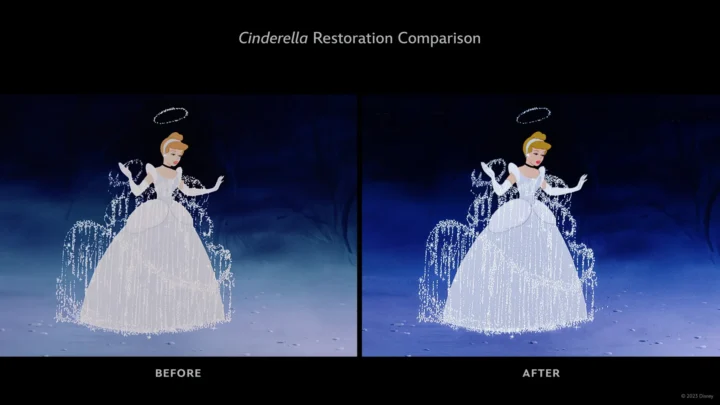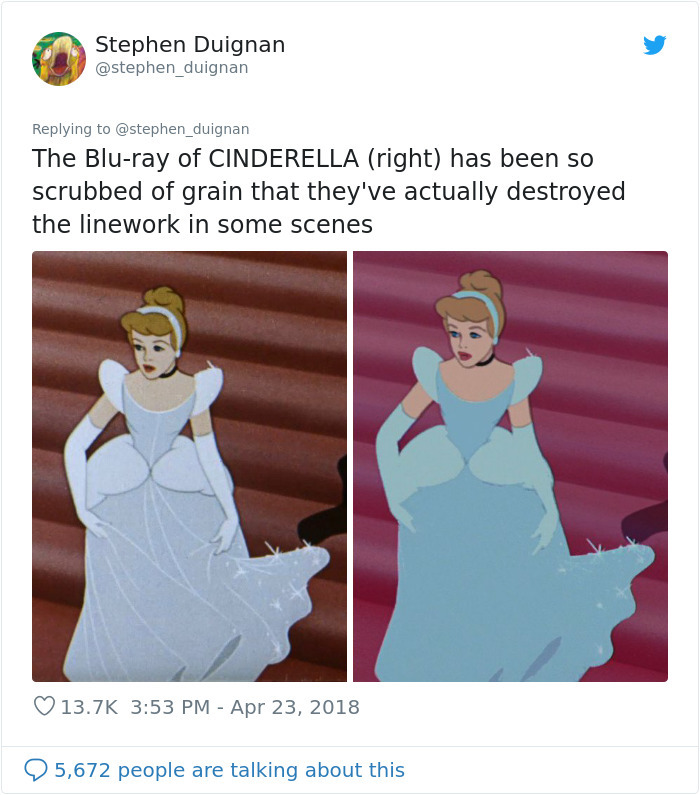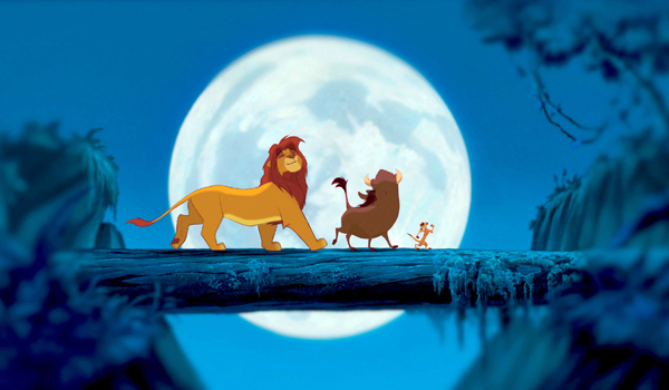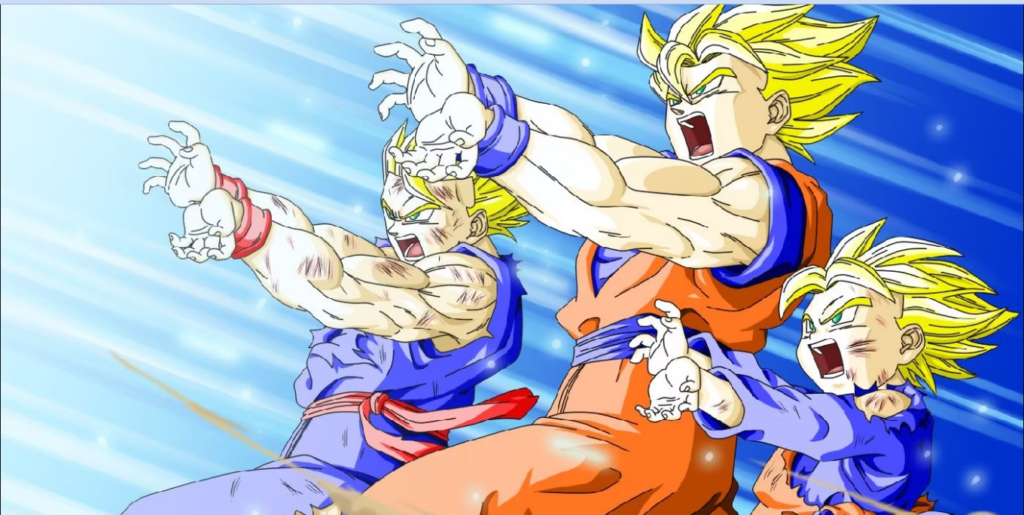In the vast world of animation, there are lots of artworks that people have loved for a long, long time. Think about the original animations made by Walt Disney or the amazing movies from Studio Ghibli. These cartoons aren’t just fun to watch; they’re artistic treasures that people really care about.
But here’s the problem: as time goes by, these cartoons can start to get old and may look outdated. That’s not a comment on the quality of the work, but a reality of how technology and graphics improve over time. Just like how old photos fade or get wrinkly, old animation can start to look blurry or even fall apart.
That’s where the concept of restoration comes in. Animators are working hard to save their favorite artworks from being lost to time. It’s like giving an old favorite toy a good clean and fixing any bits that are broken (a bit like the old man fixing Andy in Toy Story 2). However, restoration is complicated in more ways than one. Let’s dive into the process and the problems animators may face when they bring an old animation back to life.
Table of Contents
Bringing Animated Gems Back to Life
Preserving and restoring old animation is a meticulous process that requires a delicate balance of artistry and technology. The journey begins with the identification of deteriorating or damaged film reels. You can find these online, but if they’re old enough, you probably have to look in archives, libraries, or private collections. These fragile relics hold the key to preserving the magic of animation for future generations.
Once they have the source material, preservationists carefully digitize the film using state-of-the-art scanners. This ensures that every frame of animation is captured with the utmost precision, preserving the original colors, textures, and nuances of the artwork. The closer their scans are to the original tapes, the less work they’ll have to do later. It’s also the most effective way to make sure you don’t stray too far from the source material.

With the digital files in hand, restoration experts embark on the painstaking journey of repairing any damage or imperfections that may have occurred over time. This can involve digitally removing scratches, tears, or other blemishes, as well as enhancing the overall image quality to ensure that the animation looks as vibrant and vivid as it did on its original release.
Once the restoration process is complete, the newly revitalized animation is ready to be shared with audiences old and new, allowing future generations to experience the magic of these timeless classics in all their glory.
How They’re Doing It
Preservationists are armed with an impressive array of techniques and technologies. Their tools ensure the faithful preservation of beloved animated classics by breathing new life into them for future generations to enjoy.
One of the cornerstone technologies in animation preservation is advanced scanning equipment. This high-tech gear allows preservationists to create incredibly detailed digital copies of original film reels. As we mentioned above, they use expensive, high-resolution scanners to capture every frame of the animation. Once you have the digital copies on hand, restoration experts turn to digital restoration software to work their magic.
Programs like Adobe After Effects and Diamant-Film Restoration are indispensable tools in the restoration process. With these software suites, preservationists can repair damage, remove imperfections, and enhance image quality with remarkable precision. It’s the only way to avoid scratches, tears, and the faded colors that are characteristic of old animation. Up until a few years ago, most of these processes were manual, at least to some degree. But the 2020s have brought technologies that can automate the most labor-intensive parts of restoration.
Artificial intelligence and machine learning are the most exciting advancements in animation in decades. Through sophisticated algorithms and deep learning techniques, machines can analyze and identify imperfections in the animation, allowing preservationists to focus their efforts on the most critical areas. Not only does this save time, but it also ensures that even the most challenging restoration projects can be tackled with confidence and efficiency. Remember what we said about only large studios taking on restoration projects? This automation can allow independent studios to get in on the action.
Problems with the Process
The market for animated series and movies, especially for adults, has been growing year over year. Fans don’t just demand new content; they want the moves and shows from their childhood to get the same attention. Despite the existing market and the high demand, the preservation and restoration of old animations don’t come without their share of challenges.One of the most significant hurdles faced by preservationists is the deterioration of the original film stock.
Over time, celluloid film can become brittle, faded, or warped, making it difficult to capture the original image accurately. Additionally, the process of digitizing and restoring old animation takes a ton of time, resources, and expertise. In fact, it’s more challenging to restore an old piece than it is to make a completely new animation from scratch. This means only massive production studios can afford restoration.

In cultures that value their animators, like Japan and Korea, fans don’t like processes that are inaccessible to independent filmmakers and small studios with limited budgets. It goes against the spirit of what they’re trying to accomplish—support old art and present it to modern audiences. This discontent stems from the fact that large studios will mostly restore famous shows for maximum profit. As a result, many lesser-known or obscure animated works run the risk of being lost to history, unable to receive the preservation and restoration they deserve.
Furthermore, the subjective nature of restoration can sometimes lead to controversy, with purists arguing over the extent to which a film should be altered or enhanced. Some argue that restoration efforts should strive to preserve the original look and feel of the animation. In contrast, others believe that modern techniques should be used to enhance the viewing experience for contemporary audiences. It’s a delicate balance between keeping the soul of the source intact and aligning it with modern tastes.
The Different Forms Animation is Saved In
Old animation exists in a variety of forms, ranging from traditional celluloid film reels to digital files stored on modern media formats. Celluloid film, the medium of choice for early animated films, is fragile and prone to deterioration over time. If you want to preserve those films, they need to be digitized.
Once it’s digital, old animation can be stored, accessed, and shared with audiences around the world. Digital formats offer numerous advantages over traditional film, including greater durability, flexibility, and accessibility, making them an ideal medium for preserving and sharing old animation.
From classic hand-drawn animations to pioneering stop-motion techniques, old animation comes in many forms, each with its own unique charm and appeal. Whether it’s the timeless charm of a Disney classic or the groundbreaking innovation of an early experimental film, old animation continues to captivate audiences of all ages, transcending the boundaries of time and technology.
The Champions of Animation Preservation
In the world of animation preservation, a diverse range of dedicated organizations and individuals work tirelessly to ensure that old animated treasures are protected for future generations to enjoy. These unsung heroes come from various backgrounds, each playing a crucial role in safeguarding the legacy of animation.
The West
Among the giants in the industry, we have renowned studios like Disney and Warner Bros. These behemoths have established specialized departments solely focused on preserving their extensive libraries of beloved animated classics. These departments are staffed with teams of preservationists, archivists, and restoration experts working diligently to maintain the integrity of the studio’s most cherished films. For example, Disney’s restoration efforts have brought iconic films like “Snow White and the Seven Dwarfs” and “Fantasia” back to life in stunning high-definition, ensuring that they continue to dazzle audiences for generations to come.

The East
It’s not just massive Western studios leading the charge in animation preservation. In Japan, legendary studios like Studio Ghibli and Toei Animation have made significant contributions to the restoration and remastering of classic anime films and series. Studio Ghibli, known for masterpieces like “My Neighbor Totoro” and “Spirited Away,” has undertaken extensive restoration projects to preserve the visual splendor of its films for future audiences to enjoy. Similarly, Toei Animation has restored iconic series like “Dragon Ball” and “Sailor Moon,” breathing new life into these beloved franchises for fans old and new.

The Little Guy
Beyond the big studios, independent archives and preservation societies play a vital role in safeguarding animation history. Organizations like the Academy Film Archive and the National Film Preservation Foundation are dedicated to collecting, restoring, and archiving animated works from around the globe. Their efforts ensure that even the most obscure gems, such as experimental shorts or forgotten classics, are not lost to the sands of time.
Individual collectors and enthusiasts contribute their passion and expertise to the preservation effort. These dedicated individuals often take it upon themselves to digitize and restore rare or forgotten animated films, ensuring that these hidden treasures have a chance to be preserved and enjoyed by future generations. From meticulously cleaning and digitizing old film reels to using advanced restoration software, these enthusiasts spare no effort to keep the magic of animation alive.
The Importance of Animation: Preserving Cultural Heritage
Restoration isn’t just about preserving individual films; it’s about safeguarding our cultural heritage for future generations. Animation is more than just entertainment; it’s a reflection of our shared history, values, and aspirations. By preserving and restoring old animation, we ensure that these cultural treasures continue to inspire, educate, and entertain audiences for years to come.
Much like all other art forms, old animation offers a window into the past. It provides valuable insights into the artistic, technological, and social trends of bygone eras. You can learn a great deal about politics, culture, and society as a whole from what we choose to portray in our art. From the groundbreaking innovations of early pioneers to the timeless storytelling of classic fairy tales, old animation offers a rich tapestry of cultural expression that deserves to be preserved and celebrated. It even has a profound impact on future generations of artists, filmmakers, and storytellers. They serve as a source of inspiration and creative fuel for generations to come.
In conclusion, the preservation and restoration of old animation is not just a technical marvel; it’s a labor of love and dedication. Through a combination of advanced scanning equipment, digital restoration software, and cutting-edge technologies, preservationists can bring back beloved classics. From the whimsical wonders of Walt Disney’s early animations to the groundbreaking works of Studio Ghibli, these animated masterpieces are more than just entertainment; they are cultural treasures that deserve to be cherished and protected. Thanks to the efforts of preservationists, the magic of old animation continues to captivate and inspire audiences worldwide.



















